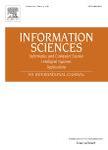版权所有:内蒙古大学图书馆 技术提供:维普资讯• 智图
内蒙古自治区呼和浩特市赛罕区大学西街235号 邮编: 010021

作者机构:Polish Acad Sci Inst Theoret & Appl Informat Baltycka 5 PL-44100 Gliwice Poland Cracow Univ Technol Fac Comp Sci & Telecommun Dept Informat & Commun Technol Warsaw 24 StF-3 PL-31155 Krakow Poland Univ Quebec Montreal Dept Comp Sci Montreal PQ H2X 3Y7 Canada AGH Univ Sci & Technol Dept Biocybernet & Biomed Engn Fac Elect Engn Automat Comp Sci & Biomed Engn PL-30059 Krakow Poland Ngee Ann Polytech Dept Elect & Comp Engn Clementi 599491 Singapore SUSS Univ Sch Sci & Technol Dept Biomed Engn Clementi 599491 Singapore Kumamoto Univ IROAST Kumamoto Japan
出 版 物:《INFORMATION SCIENCES》 (信息科学)
年 卷 期:2020年第516卷第0期
页 面:401-418页
核心收录:
学科分类:12[管理学] 1201[管理学-管理科学与工程(可授管理学、工学学位)] 08[工学] 0812[工学-计算机科学与技术(可授工学、理学学位)]
基 金:Supplementary Data S1 Supplementary Raw Research Data. This is open data under the CC BY license http://creativecommons.org/licenses/by/4.0/ Supplementary Data S1 P. Plawiak B.Eng. M.Sc. Ph.D. was born in Ostrowiec Poland in 1984. He obtained his B.Eng. and M.Sc. degree in Electronics and Telecommunications and his Ph.D. degree with honors in Biocybernetics and Biomedical Engineering at the AGH University of Science and Technology Cracow Poland in 2012 and 2016 respectively. He is the Head of the Department of Information and Communications Technology and an Assistant Professor in Cracow University of Technology Cracow and Institute of Theoretical and Applied Informatics Polish Academy of Sciences Gliwice Poland. He has published more than 20 papers in refereed international SCI-IF journals. He is a reviewer of many prestigious and reputed journals. His research interests include machine learning and computational intelligence (e.g. artificial neural networks genetic algorithms fuzzy systems support vector machines k-nearest neighbors and hybrid systems) ensemble learning deep learning evolutionary computation classification pattern recognition signal processing and analysis data analysis and data mining sensor techniques medicine biocybernetics and biomedical engineering. M. Abdar received his bachelors degree in computer engineering from Damghan University Iran in 2015. He also received the masters degree in computer science and engineering from the University of Aizu Aizu Japan in 2018. Currently he is working toward his Ph.D. degree at the Department of Computer Science University of Quebec in Montreal Montreal (QC) Canada. He has written several papers in the fields of data mining machine learning sentiment analysis and user modeling in some refereed international journals and conferences. His research interests include data mining machine learning ensemble learning evolutionary algorithms and user modeling. He is a recipient of the Fonds de Recherche du Quebec Nature et Technologies Award (ranked 5th among 20 candidates in the second round of selection process) in 2019. J. Plawiak B.Eng. M.Sc. was born in Ostrowiec Poland in 1988. She obtained her B.Eng. degree in Automatic Control and Robotics at the AGH University of Science and Technology Cracow Poland in 2012 and her M.Sc. degree in Management specialty Applied Computer Science at the School of Management and Banking Cracow Poland in 2016. Her research interests include machine learning and computational intelligence (e.g. artificial neural networks support vector machines k-nearest neighbors) classification pattern recognition data analysis and data mining economics banking and biomedical engineering. V. Makarenkov Ph.D. is a Full Professor and Director of a graduate Bioinformatics program at the Department of Computer Science at the University of Quebec in Montreal. His research interests are in the fields of Bioinformatics Data mining Software Engineering and Artificial Intelligence. U Rajendra Acharya Ph.D. DEng. is a senior faculty member at Ngee Ann Polytechnic Singapore. He is also (i) Adjunct Professor at Taylors University Malaysia (ii) Adjunct Faculty at Singapore Institute of Technology- University of Glasgow Singapore and (iii) Associate faculty at Singapore University of Social Sciences Singapore. He received his Ph.D. from National Institute of Technology Karnataka (Surathkal India) and DEng from Chiba University (Japan). He has published more than 400 papers in refereed international SCI-IF journals (345) international conference proceedings (42) books (17) with more than 25 000 citations in Google Scholar (with h-index of 83) and ResearchGate RG Score of 46.9. He is ranked in the top 1% of the Highly Cited Researchers (2016 2017 201
主 题:Credit scoring Machine learning Data mining Ensemble learning Deep learning Genetic algorithm Feature extraction and selection
摘 要:Credit scoring (CS) is an effective and crucial approach used for risk management in banks and other financial institutions. It provides appropriate guidance on granting loans and reduces risks in the financial area. Hence, companies and banks are trying to use novel automated solutions to deal with CS challenge to protect their own finances and customers. Nowadays, different machine learning (ML) and data mining (DM) algorithms have been used to improve various aspects of CS prediction. In this paper, we introduce a novel methodology, named Deep Genetic Hierarchical Network of Learners (DGHNL). The proposed methodology comprises different types of learners, including Support Vector Machines (SVM), k-Nearest Neighbors (kNN), Probabilistic Neural Networks (PNN), and fuzzy systems. The Statlog German (1000 instances) credit approval dataset available in the UCI machine learning repository is used to test the effectiveness of our model in the CS domain. Our DGHNL model encompasses five kinds of learners, two kinds of data normalization procedures, two extraction of features methods, three kinds of kernel functions, and three kinds of parameter optimizations. Furthermore, the model applies deep learning, ensemble learning, supervised training, layered learning, genetic selection of features (attributes), genetic optimization of learners parameters, and novel genetic layered training (selection of learners) approaches used along with the cross-validation (CV) train-ingtesting method (stratified 10-fold). The novelty of our approach relies on a proper flow and fusion of information (DGHNL structure and its optimization). We show that the proposed DGHNL model with a 29-layer structure is capable to achieve the prediction accuracy of 94.60% (54 errors per 1000 classifications) for the Statlog German credit approval data. It is the best prediction performance for this well-known credit scoring dataset, compared to the existing work in the field. (C) 2019 The Authors. Publish